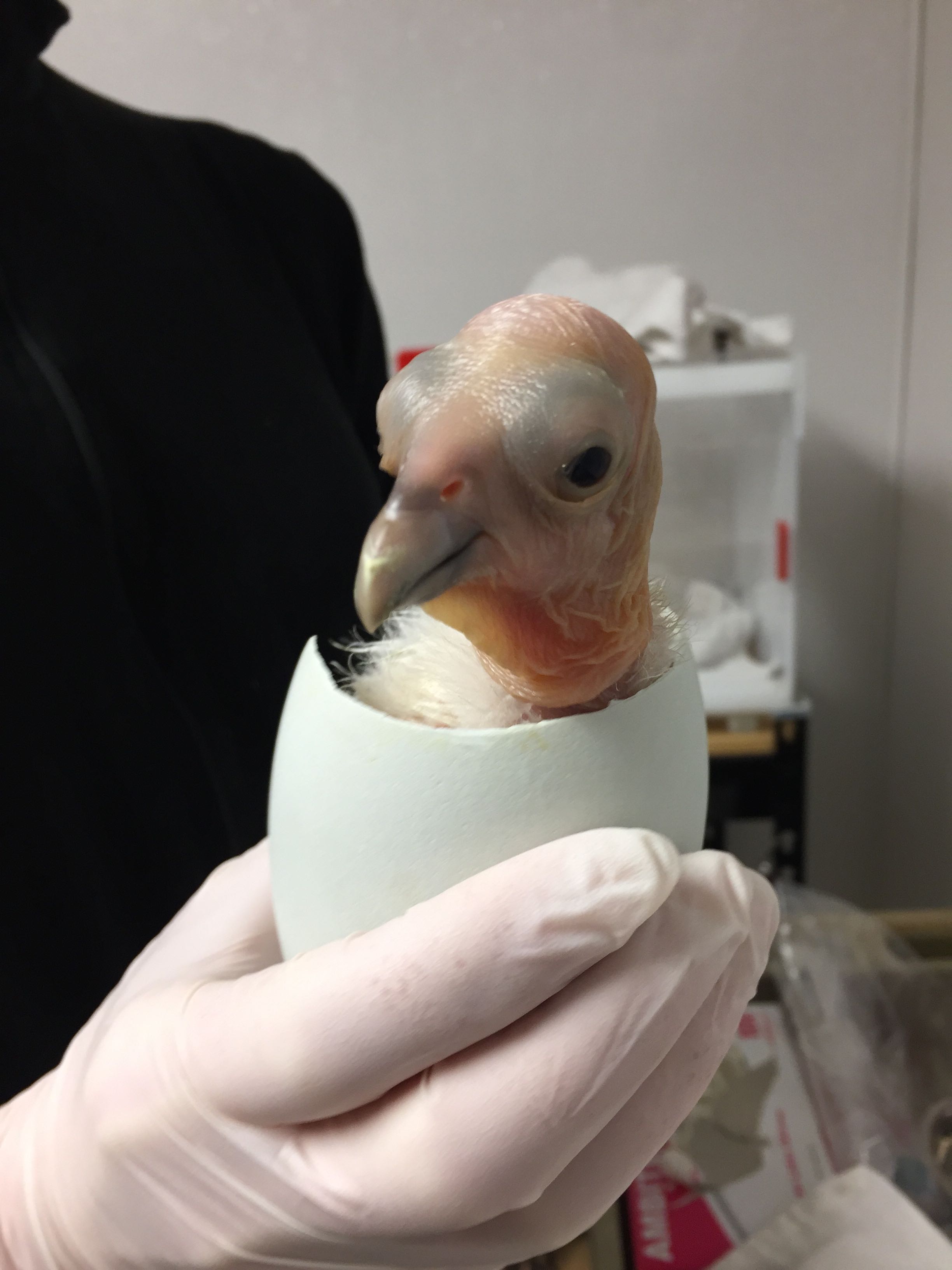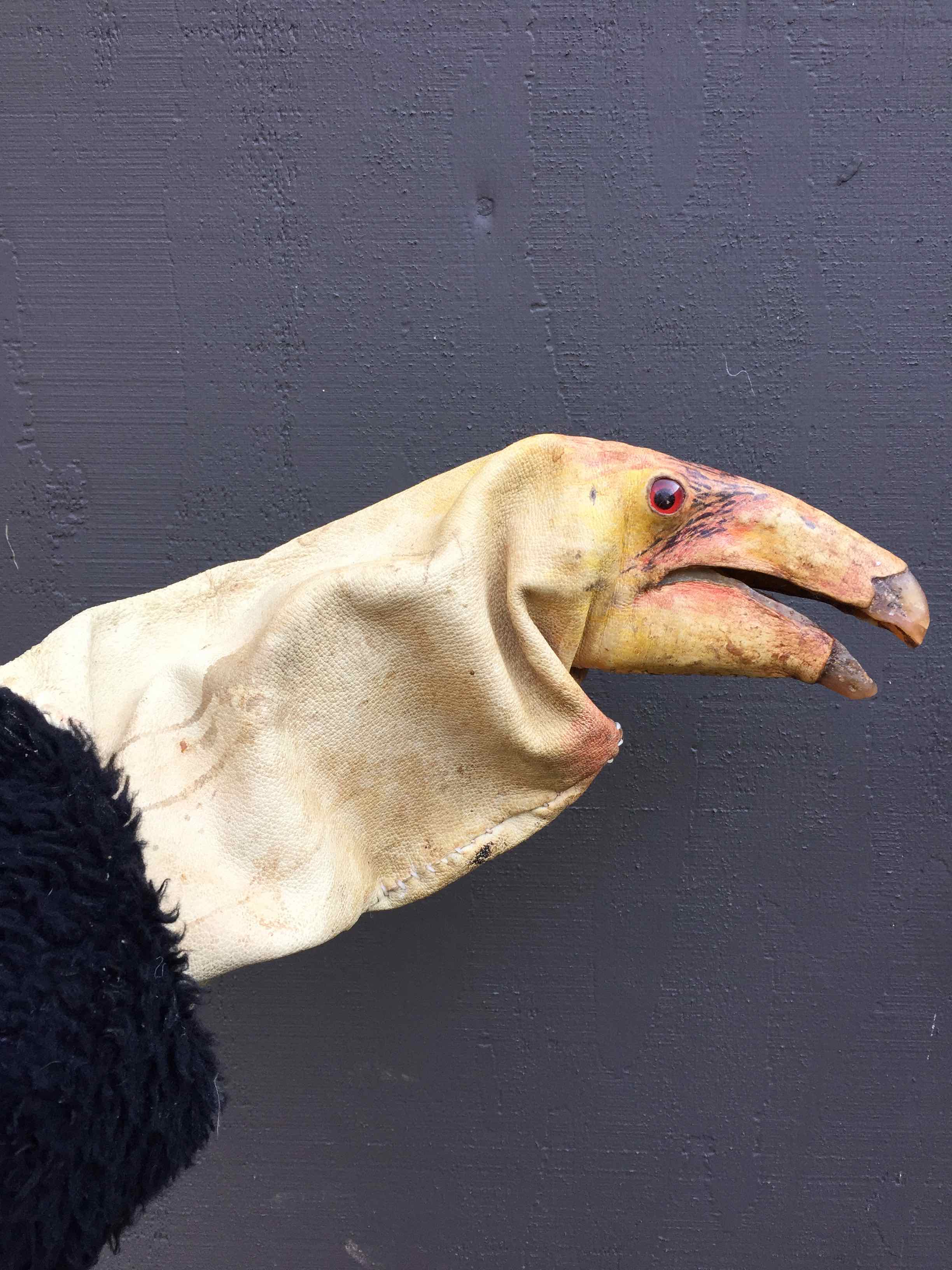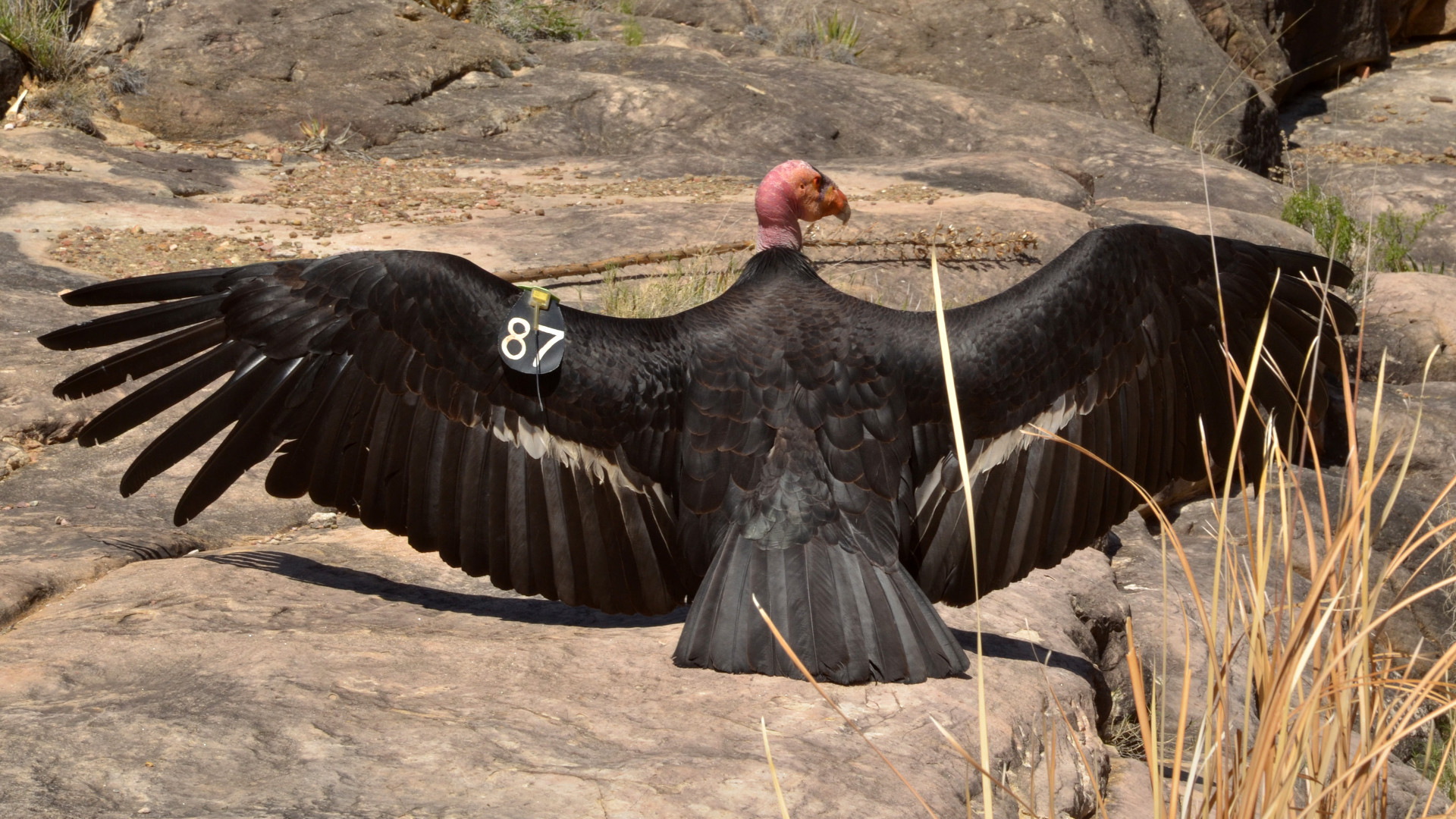Sometimes saving a species from extinction requires a helping hand — or a jailbreak.
That may sound like a mixed metaphor, but it’s actually the case for critically endangered California condors (Gymnogyps californianus), North America’s largest birds. Every once in a while, a condor chick needs a little help getting out of its egg, and human caretakers need to step in to gently assist it on its journey out of the shell.
Take the chick known as OZ07, whose egg was laid this past February in Oregon Zoo’s condor captive-breeding program, about 50 miles south of Portland. In April, as the egg approached its hatch date, keepers could tell that the chick was active but unable to break through the shell. Condor eggs only contain enough air for a chick’s first breath, so keepers knew they needed to let in more air. They chiseled a tiny hole in the shell, giving OZ07 a source of much-needed oxygen.
That wasn’t quite enough, though. “Oz” was still stuck. Zoo staff removed another small piece of shell, hoping it would encourage the chick to hatch. Four days later, it still hadn’t budged. Finally the team opted to slowly snip open additional portions of the shell and carefully ease this tiny bird out into the world:

The de-egging — technically called a “hatch assist” — was a success, and OZ07 became the sixth out of seven California condor chicks born this year at Oregon Zoo. The zoo has now raised 71 condor chicks overall.
That’s a pretty amazing number when you consider that there were only 22 California condors left in the entire world back in 1982, following years of habitat loss, shootings, powerline collisions and poisoning (condors are particularly susceptible to lead, which paralyzes their digestive systems). The last surviving members of the species were brought into captivity over the next five years in order to save them from extinction.
That last-ditch effort worked. Today, although the species is still critically endangered, captive-breeding and reintroduction programs have helped to boost the population to more than 460, the majority of which once again live in the wild.
How has this success been possible? It helps that, other than the occasional hatch assist and other minor problems, the birds do relatively well in captivity.
“It turns out to be not too difficult to raise California condors,” says David Shepherdson, Oregon Zoo’s deputy conservation manager. “They don’t seem to have any particular disease problem. They’re relatively easy to pair up with each other. Their needs are fairly simple. You just throw some dead animals in there for them to eat and then, you know, we have a lot of eggs.”
Of course, Shepherdson says, there are still plenty of issues to deal with. For example, another chick from this year’s hatching class was, for an unknown reason, abandoned by its parents 18 days after it was born. Without mom and dad to feed it, the chick would have died. That meant intervention became necessary.
But human interaction with condor chicks is always kept to a minimum in order to prevent chicks from becoming acclimated to people, something that will help keep them safe once they’re released into the wild. To get around this problem, staff members ended up feeding the chick using a special tool — hand puppets designed to look like adult condors.

That’s actually a longstanding solution to similar chick abandonments. In fact, Shepherdson says, most problems the breeding programs encounter already have solutions. “The community as a whole has a lot of experience at this point,” he says. “We have 30-plus years of rearing them. Some of the people in these programs have been involved almost right from the beginning. So, you know, we don’t tend to come up against too many problems now we haven’t seen before in the past that somebody had to deal with.”
Another one of those problems that zoos have learned to solve was getting over a basic physical limitation. Condors, it turns out, typically only lay one egg at a time in the wild. On that schedule, boosting the condors’ population would have been painstakingly slow. To get around this, zookeepers developed a technique called double clutching. “You take one of the eggs and then you foster it with another couple of birds,” Shepherdson explains. “Then the original pair will usually lay another egg, so it’s a way of doubling production.”
Double clutching isn’t done as much anymore, though. “We’re further into the program, so the emphasis is more on producing the highest quality chicks and the ones most likely to survive and thrive in the wild, rather than just sheer numbers,” Shepherdson says. That’s another reason caretakers step aside and let young condors learn to be condors.
That doesn’t stop zoo staff from watching them. “They’re just really interesting,” Shepherdson says. “I’m an animal behaviorist by training, and I’m always intrigued about what they think and what they do. There appears to be a lot going inside their heads, and they are clearly one of the more intelligent bird species, up there with parrots and corvids. They also engage in a lot of interesting social behavior — in some ways they’re more like primate groups than bird groups in that they have such rich social interactions.”
As this year’s chicks start to grow large enough to fly on their own, Shepherdson says it’s an honor to work on such an iconic conservation program. “It’s the kind of program I dreamed about being involved with when I first started studying biology.” Meanwhile he says the entire condor recovery team is proud of its collective success and that they have prevented the California condor from going extinct.
He notes, however, that the species still has a long way to go before it can be considered recovered. In particular, lead remains a huge problem for condors in the wild. The zoo, like several other organizations, has been conducting outreach to hunters to try to get them to switch away from lead ammunition, which can leave traces of the metal in carcasses and gut piles that condors eat.
“We hope we can persuade a significant number of hunters to switch to non-lead ammunition,” Shepherdson says. “That would help condors, and it would also have a huge benefit for other scavenging birds, primarily bald eagles and golden eagles.”
One more step toward recovery looms in the near future. Over the past few years, condors have been released back into the wild in three sites southern California, plus two more sites near the Grand Canyon and in Baja California. Now, after years of work among state and local agencies and other partners, it’s possible that condors could be also reintroduced at a sixth site, the Yurok tribe’s land in Northern California. Shepherdson says that could happen as early as 2019 or 2020.
That’s just stage one. Once they become established in Northern California, it’s likely the birds could then spread their massive wings and fly over the border, bringing them once again to the skies of Oregon, where they haven’t lived for decades.
“That would be very exciting,” Shepherdson says. “We’ve always hoped that we might at one point bring them back to Oregon because it’s definitely part of their former range and there are historical accounts of people like Lewis and Clark seeing them here.”
That’s still a few years away, though. Until then they’ll keep their chisels and puppets at the ready and stay prepared to give the species every helping hand it needs.



2 thoughts on “Saving California Condors — With a Chisel and Hand Puppets”
Comments are closed.